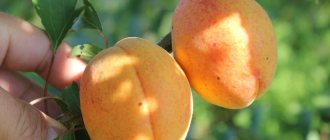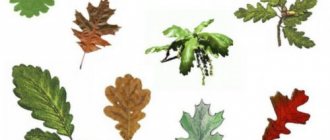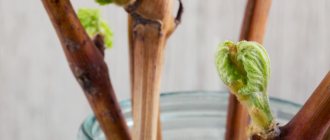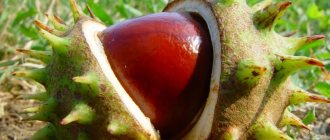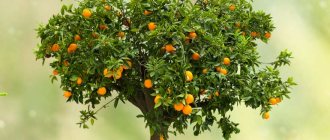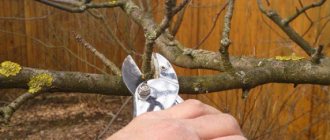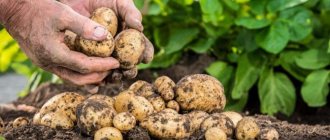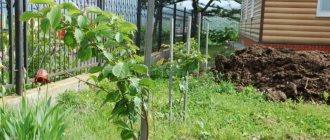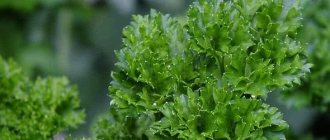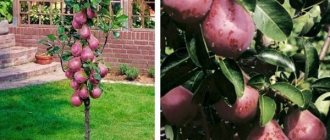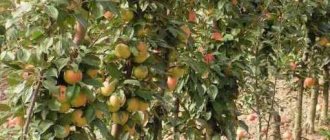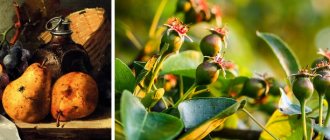How did the Khabarovsk apricot appear?
Apricot Khabarovsk
In 1949, breeder Kuzmin G.T. developed a new variety of apricot, which was named Khabarovsk. It is distinguished by abundant fruiting, excellent taste, versatility of use and unpretentiousness. It was obtained by pollinating the flowers of the Michurinsky variety with pollen from the Red-cheeked apricot tree.
Interesting!
After apricots were brought to Greece by Alexander the Great, they began to spread throughout all corners of Europe.
Today, the Khabarovsk apricot is familiar to the young regions of Russia and Ukraine. It blooms early, the buds almost never freeze, and therefore the fruits of this tree are often used for sale.
Plant qualities
The Khabarovsk apricot, the variety description of which is given above, has the following qualities:
- Fruiting occurs in the fourth or fifth year;
- transportability is average, so fruits are not recommended to be transported over long distances;
- abundant fruiting every year;
- the variety tolerates both drought and waterlogging;
- frost resistance is average, but it can be increased by grafting winter-hardy rootstocks into the crown, also by covering the young tree for the winter;
- beautiful presentation;
- high resistance to klyasterosporiosis and moniliosis.
In general, a good variety. Apricot Khabarovsk is popular in many regions.
Characteristics and description of the Khabarovsk apricot variety
Also check out these articles
- Cauliflower
- Description and characteristics of Daikon radish
- Contents of Muscovy Ducks
- Raspberry variety "Reward"
Apricot branch
The Khabarovsky variety is partially self-fertile, but if pollinators do not grow nearby, the yield will be low, so to get a bountiful harvest you need to have at least 2-3 varieties on the plot. It begins to bear fruit in the 4-5th year of development after planting in a permanent place. Harvest ripening time is July 28-30. Yields are annual and consistently high. Up to 36 kg of apricot is harvested from the tree.
Apricot variety Khabarovsk is characterized by large growth. The tree grows up to 5 meters in height if its growth is not controlled. The crown is spreading but sparse, so there are usually no particular problems with pruning. The skeletal branches are almost straight, thick, the color is dark, slightly violet with white longitudinal stripes. Young branches (1-2 years old) are also thick, straight, and can reach up to a meter in length.
Interesting!
The main advantage of the Khabarovsk variety is the resistance of flowers to spring frosts, so its yield is always high.
The leaves are medium-sized, typically oval in shape with a pointed end. The front side is dark green, matte, and the back is light green. The petioles to which the leaves are attached are burgundy in color and of medium length. The tree produces large, white flowers.
History of selection
Khabarovsk - has long been known. It was obtained at the DalNIISKh by breeder G.T. Kuzmin. This variety was bred by pollinating the flowers of the Best Michurinsky apricot with pollen of the Red-cheeked - European variety.
To this day, Khabarovsk apricot is popular, but mostly in the southern regions, as it blooms early. However, when cultivating the variety in other parts of Russia, flower falling and damage during late frosts were not observed.
Khabarovsk is a long-known apricot variety. It was obtained at the DalNIISKh by breeder G.T. Kuzmin. This variety was bred by pollinating the flowers of the Best Michurinsky apricot with pollen from the Red-cheeked European variety.
The father of the Khabarovsky variety can be called breeder G.T. Kazmina. It was he who developed this variety in 1949 on the basis of the Far Eastern Research Institute of Agriculture, by crossing the Red-cheeked and Best Michurinsky apricots. The representative of the crop obtained as a result of selection is intended for cultivation in regions such as Khabarovsk and Primorsky territories.
The Khabarovsk variety has its own distinctive feature - very early flowering. Therefore, it is popular in the southern regions. But when grown in the middle zone and other areas where late frosts are frequent, shedding of flowers from the trees was not noticed. This means that the variety is cold-resistant.
A distinctive feature of the Khabarovsky apricot variety is early flowering.
Khabarovsk apricot begins to bear fruit in the 4th–5th year of life. For a good and abundant harvest, the tree needs proper care, but it is worth noting that the variety has good tolerance to both prolonged drought and waterlogging.
The Khabarovsky apricot variety has relative resistance to diseases such as clasterosporiasis and moniliosis, but there is a likelihood of damage by the codling moth.
All the above-described features of the variety have made it very popular among gardeners in many regions of Russia.
Apricot fruits are rich in vitamin C, sugars and malic acid. The Khabarovsky variety ripens at the end of July. If you provide appropriate care, the tree will give you a harvest weighing up to 36 kg.
Work on the creation of more frost-resistant varieties of apricots began back in 1933. In Chelyabinsk, experiments were conducted by Mikhail Nikolaevich Salamatov. A little later, they were continued by Grigory Tikhonovich Kazmin at the Far Eastern Research Institute of Agriculture (abbr. DalNIISKh). The breeder decided to pollinate the previously bred frost-resistant variety Best Michurinsky with southern apricots (Alexander early, Royal, Overinsky early and Red-cheeked).
The seeds were collected in 1950, and the following year several new seedlings appeared in the breeding nursery. For 13 years, the trees grew actively and produced a stable harvest. Successful tests made it possible to include the hybrid in the State Register of Varietal Crops.
The variety is also known as Far Eastern, Ussuri or Amur early apricot. It is characterized by exceptional frost resistance. During the tests, the branches did not freeze more than one-third of their length, and the wood was almost not affected by cold weather at all.
Apricot Amur
In addition, the hybrid is equipped with high immunity to various fungal diseases. The harvest remains consistently high for many years. All this makes the Amur apricot ideal for cultivation in the Central and Far Eastern regions of the country.
Fruits and taste
Apricot fruit
Apricot fruiting, as a rule, is observed on young branches (2-3 years), older branches rarely bear fruit. Fruit branches can be long or short - in different ways, but they are usually located at right angles. Fruit buds grow in 1-3 pieces, round with a sharp tip.
Apricots of the Khabarovsky variety are large, weighing 30 g each, but can grow up to 45 g. The shape is round, elongated, slightly pressed on the sides. They are pointed at the top and the bottom pit is deepened. The peel of the fruit is uneven, pubescent, and does not lag behind the pulp. The color of the fruit is pale green, the blush is either solid orange-red or dotted.
The pulp is fleshy, the juice content is average. Color yellow-orange. The taste is sweet with sourness, tasting score 4 points. Contains up to 12.3% sugars, 2.1% malic acid, 8% vitamin C and approximately 16% dry matter. The stone is up to 1.2 grams, elongated with grooves, and lags behind the pulp normally. The kernel is edible and sweet.
Features of the variety
- The tree can reach up to 5 m in height.
- The main branches are thick, strong, dark purple in color with lightened stripes, and the leaves are dark green. All this forms a not very dense crown.
- The flowers are white with large petals.
- Apricot fruits are formed on small fruit branches at right angles to the mother branch, as a rule, large, weighing from 30 to 45 g, yellow with red-orange spots, covered with short fluff. The pulp of the fruit is juicy, with a sweet and sour taste. The bone has a sweetish taste. Does not lose its presentation during transportation.
Apricot tolerates frost, heavy rainfall and dry weather well. Resistance to diseases and pests is average.
Advice! For preventative purposes, it would not hurt to spray against pests.
It begins to bear fruit approximately 5 years after the scion. Fruit ripening occurs around the beginning of August.
Refers to early varieties. Productivity – up to 37 kg per plant. Photos from gardeners' plots show that the branches are densely lined with fruits.
How to plant Khabarovsk apricot?
We recommend reading our other articles
- Drinkers for chickens
- The best varieties of peas
- Raspberry variety Yellow Giant
- How to prune an apricot in spring
Apricot planting
Khabarovsk apricot needs to be planted like any similar fruit trees. The most important thing is the right location. It should not be low so that the water does not stagnate. It is desirable to have natural protection in the form of a fence or house from the wind (so that the young tree does not break during a strong wind or hurricane).
Planting time is spring or autumn, when it is convenient for the gardener if the site is located in a warm climate zone. But if severe frosts are possible in winter, it is worth postponing planting until spring. The tree hole is prepared at least 2 weeks before planting. This will allow the soil to settle well so that the seedling can be placed comfortably.
Before planting, a “cushion” is made of fertile soil and fertilizer (minerals and humus). If the soil is acidic, then the acidity is reduced with dolomite flour or lime. When planting a tree, you must first install a stake for the garter. After this, a hill is made from fertile, fertilized soil. A seedling is placed on it, its roots are spread along the entire circumference of the hole and sprinkled with earth. When the hole is filled, the soil is compacted, but not too hard so as not to damage the roots, and the trunk is tied to a peg.
So that the Khabarovsk apricot can grow in the next week without the intervention of the gardener, it is watered abundantly after planting with 1-2 buckets of water.
Choosing a landing site
The tree should be planted on a hill where groundwater cannot damage the roots or cause them to rot. The site should be sunny, but protected from northern winds. Apricots do not grow well in acidic soil, so it needs to be neutralized. The variety does not have any special preferences for soil, but it will still need to be fertilized before planting Khabarovsk apricot. Planting and caring for a tree is very simple.
The tree should be planted on a hill where groundwater cannot damage the roots or cause them to rot. The site should be sunny, but protected from northern winds. Apricots do not grow well in acidic soil, so it needs to be neutralized. The variety does not have any special preferences for soil, but it will still need to be fertilized before planting Khabarovsk apricot. Planting and caring for a tree is very simple.
Read more:
- Description of the grape variety Gold Finger
- Pear varieties for the Moscow region with photos and descriptions: rating
- Rusbol grapes - description and characteristics of the variety
- Agate Donskoy grapes variety description yield proper care
How to care for apricot?
Apricot fruits on the tree
Tree care is not as important as, for example, tomatoes or cucumbers, as they are large, strong plants that can grow well even in the wild. But only with regular care can you achieve maximum benefits from apricots.
- The abundance or lack of moisture does not bother the tree much. It continues to grow well and produce fruit, so drought or rainy season is not critical. And yet, during a prolonged drought, when the earth literally dries out and cracks, it is worth watering the tree, loosening the soil in the circle around the trunk, and then mulching it to reduce water evaporation.
- Pruning this variety is not difficult. The first 4-5 years are spent on formation, then sanitary. Since there are not very many branches, it takes a little time and is carried out 1-2 times a year.
- Khabarovsk apricot is resistant to moniliosis and clasterosporia, but preventive treatment 1-2 times a year will not prevent diseases. But the tree is not resistant to pests. Especially during the fruiting period and before winter, it is an ideal environment for the life of harmful and beneficial insects. So if you find a codling moth or any other harmful insects, you need to spray it.
- Fertilizer is applied at least once a year - in the fall in the form of humus or compost in the tree trunk circle for digging.
- Khabarovsk apricot has relative winter hardiness, so it is usually not insulated for the winter, especially since it is planted in the southern regions. If the tree grows in areas with frosty winters, it needs to be insulated for the winter (mulch the ground, wrap the trunk with insulating material). If the tree is still small, you can simply build a frame for it.
Rules of care
The first thing you must remember when growing any type of apricot: the trunk circle must be free of weeds. This is especially important while the tree is still small. For healthy growth, the fragile root system of a seedling needs soft soil rich in oxygen. The roots of weeds will quickly occupy the space around the young apricot, compacting the soil and blocking access to oxygen.
After watering the seedlings, loosen the soil around them so that the roots can breathe and be saturated with oxygen. Subsequently, regularly weed out weeds and collect fallen leaves throughout the warm season.
We will consider the remaining rules of care in more detail.
Apricot variety Khabarovsk needs infrequent watering. Abundant moisture will be required in early and mid-summer. At the end of the warm season, reduce the amount and volume of irrigation, otherwise the shoots will grow and lengthen greatly.
Read more: Cabernet Cortis grapes - a classic of early ripeness - Grape varieties, Wine
Apricots of the Khabarovsk variety need abundant watering only in early and mid-summer.
Wintering the plant
In the south of Russia, the Khabarovsk apricot survives the winter without any problems. In the middle zone and the Volga region he will need additional shelter. But in any case, you will have to prepare for winter.
As soon as the leaves fall from the trees, immediately remove them and destroy them by burning. This way you will get rid of insect pests and their larvae that spend the winter in the foliage. Remember that they are carriers of bacteria, fungi and microbes that cause various diseases. Whiten the tree trunk to a height of 1 m to prevent rodents from eating the bark.
Be sure to whiten the apricot trunk before winter to avoid damage from rodents
If winters in your region are long and cold, the young tree will need to be covered. Do the following: form a mound of earth around the trunk, and wrap the trunk with non-woven material. The tree trunk circle should be covered especially carefully.
Tree pruning
Every spring, sanitary pruning should be carried out, removing branches with traces of disease, serious damage and frostbite.
In the first years of life, the Khabarovsk apricot will require crown formation. For this purpose, a sparse-tiered pruning method is used. With it, 5–7 branches of the first order are left for growth and development. They should be located at a distance of 35–40 cm from each other.
Scheme of pruning apricot variety Khabarovsk for crown formation
When forming the crown, first of all, branches are cut at a height of 0.9 m from the ground. The first to be shortened by half are the 2 branches located along the main row. Next, everything else is cut off into a ring, leaving only the main conductor at 20–25 cm. In summer, you need to cut off all the branches that grow at an acute angle and are not the main ones.
Top dressing
Apricots are very fond of organic and chemical fertilizers. In the spring, supplement the trees' diet with fertilizers containing nitrogen. This will help the crown gain strength faster. In summer, provide the plant with phosphorus so that the fruits ripen abundantly.
Since you planted the tree in well-fertilized soil, rooting should proceed without problems. And the first application of fertilizing can be done when the apricot reaches the age of 3 years. Upon reaching 5 years, the fruiting period begins, so the volume of fertilizers needs to be doubled.
The Khabarovsky variety is resistant to fungal diseases. But preventive treatments will not harm him. Bordeaux mixture is well suited for this. Spray three times a season:
- in spring before flowering;
- after the entire harvest has been harvested;
- after autumn harvesting of leaves.
History of selection
Khabarovsk apricot variety is grown, as a rule, in regions with harsh climates and unstable weather conditions. It does not tolerate dampness and stagnant water in the soil. If snow melts in the tree trunk circle during the winter thaw, then it will certainly freeze and form an ice crust. This crust will injure the bark of the trunk, and if this phenomenon is repeated several times (which usually happens at the end of winter), the tree may die.
Any apricot does not like cold northern winds - you will have to look for a place protected by natural barriers. Such protection can be the walls of buildings, a fence, or tall, dense trees located to the north or northeast of the planting site. But you shouldn’t make the mistake of placing the tree in the shade.
In this case, the gardener will not receive a harvest, since apricots do not bloom in the shade. In the absence of natural protection, artificial protection should be installed. To do this, wooden panels are knocked down and painted white, for which you can use lime mortar. The white color reflects the sun's rays, creating additional illumination and warming up the tree crown.
Apricots grow well on hillsides
When planting an apricot tree, perform the following steps in sequence:
- In the fall, seedlings are purchased. Choose one or two year old plants with well developed roots and healthy wood.
- They are stored in the basement or dug into the ground. Before this, the roots are dipped in a mixture of mullein and clay, then wrapped in damp burlap or moss. The seedling can be kept buried until spring
- In the fall, prepare a planting hole in the following order:
- Planting begins in early spring before sap flow begins. To avoid stagnation of water and freezing, first prepare a mound with a diameter of 2 meters and a height of at least 70 cm. Place it directly above the filled planting hole. To make it, use the same nutrient mixture that was placed in the planting hole.
- In the center of the hill, next to the stake, they dig a hole large enough to accommodate the roots of the tree and form a small mound in it.
- The root collar of the seedling is placed on the top of the mound, and the roots are straightened down.
- Now carefully fill the hole in layers, compacting it well.
- Tie the seedling to the stake with elastic material. The barrel cannot be pressed.
- A roller is formed on the hill along its diameter, which will keep irrigation water from flowing out. Planting an apricot on a hill will protect the plant from stagnant water and damping off of the roots.
- Water the tree generously. All loose soil must be saturated so that the air pockets formed during backfilling disappear.
- The tree trunk circle is mulched with freshly cut grass, humus, rotted sawdust, etc.
- Trim the seedling to 60–80 cm; if there are branches, shorten it by a third.
Khabarovsk apricot harvest
Apricot fruits Khabarovsk
Apricots usually ripen by the end of July. At this time, they may begin to fall off or simply shine with a bright blush on the branches of the tree. It is advisable to collect them immediately, without delay, so that they do not begin to deteriorate.
After harvesting, the fruits should be immediately used for processing or transportation. They can be transported over short or medium distances, since their transportability is not very high; on the road, the fruits can become crushed, leak juice and begin to rot. If apricot is used for homemade preparations, then it needs to be processed in the first 1-4 days. Khabarovsk apricot is suitable for fresh consumption, preparation of sweet dishes, preservation (compotes, juices, purees, preserves, jams).
Diseases and pests
To prevent diseases and pest attacks, preventive spraying of the plant with copper-containing preparations, for example, copper sulfate, is carried out. A one percent solution is prepared; treatments are carried out at intervals of 1.5–2 weeks until flowering. Agrotechnical techniques also help to avoid diseases: soil cleaning, weeding, pruning.
In case of illness, you need to know how to deal with it:
- Brown spot leaves dark spots on the foliage and shoots that develop into necrosis. The tree loses both foliage and fruit. Treatment is spraying with fungicide “Hom” (40 g/10 l of water).
Fruit rot threatens the entire crop. The biological drug "Gamair" is used. 5 tablets are dissolved in 10 liters of water and sprayed on the tree.
Powdery mildew, downy mildew - a whitish coating on the green parts of the plant can “move over” to the fruits. At any stage of development, you can use the biological agent “Baktofit”, spraying with a solution of 10 ml/10 l of water.
Galitsa lays eggs in flower buds. The drug “Actellik” destroys the insect and its offspring - the consumption rate per tree is 2 ml/2 l of water, spraying.
The codling moth and moth eat fruit ovaries and formed fruits. The product “Aktara” (6 ml/1 l of water) and spraying cope effectively with them.
Reviews about the Khabarovsk apricot variety
Apricot tree in spring
What are the reviews from gardeners about the Khabarovsk apricot?
- Pavel Kovalev: “My wife and I have been growing Khabarovsk apricots for more than 20 years. Fruiting is always plentiful, there is enough for canning and food too. But transporting them is very difficult. We tear off the still unripe fruits for our relatives, because after they ripen on the road they wrinkle too much.”
- Evgeny Zakharov: “Although it is said that Khabarovsk apricot is planted only in the southern regions, it has been growing in my country for quite a long time, despite the fact that in winter the temperature often drops below -25 degrees. True, I never skimp on insulation. I wrap the trunk and make a good mulch. But the tree has never frozen out before. I like almost everything about this variety, only the fruits spoil quickly.”
- Lidia Bulygina: “My interest in this variety is purely commercial. I grow them for sale, but I pick the fruits for the market that are not yet ripe. I am always confident in this variety; it has never let me down – the yield is high, every year.”
Diseases and pests
Signs: fungal disease. The ovaries fall off, the leaves and branches dry out. Gray fruit rot appears.
Fighting methods:
- As a preventative measure, trees undergo timely sanitary pruning.
- In the spring, whiten the trunk with a solution of lime and copper sulfate.
- Spray with a solution of Bordeaux mixture according to the instructions in winter, 7 days before flowering, 30 days after fruit formation
Signs: fungal disease. Brown spots with a red border appear on the leaves and fruits.
Fighting methods:
- Sanitary pruning is carried out every year.
- In the spring, the trunk is whitened with a solution of lime with the addition of copper sulfate.
- Spray with Bordeaux mixture in summer
Signs: sucking insects suck sap from young foliage. The leaves curl and dry out, and the yield decreases.
Fighting methods:
- Treat small lesions with onion or garlic tincture (300 g per 10 liters of water).
- In case of mass infestation, treat with Fufanon or Fitoverm.
- Before harvesting, use the biological product Actofit with a short decay period
Diseases and pests
In general, the variety's immunity to pests is high. However, some diseases and pests can still affect plants.
Among the diseases that are dangerous for the Champion of the North are:
- Clusterosporiosis;
- moniliosis
These diseases are caused by fungal spores. For treatment, it is recommended to use fungicides. Among chemical preparations, Horus performs well. The fungicide can be used in spring and summer. Three treatments are indicated for treatment. Approximately 2 weeks should pass between each spraying. An effective and affordable remedy is copper sulfate. The plantings are treated with a solution of the drug at a concentration of 3% twice: before the beginning of the growing season and at the end of fruiting.
We recommend reading about diseases of apricot trees and their treatment.
Gardeners note the likely appearance of two types of pests on plants:
- aphids;
- weevils.
Parasites are removed using insecticides. In spring and summer, when the risk of damage is highest, trees are sprayed with Fufanon. The product is used twice. 1–1.5 weeks should pass between applications.
Also find out why the apricot tree does not bear fruit.
To prevent the development of diseases and pest attacks, take care of prevention in advance. Agronomists include preventive measures:
- timely removal of fallen leaves;
- regular pruning;
- digging up the soil;
- annual preparation for winter, including whitewashing;
- spraying in early spring and late autumn with a 3% solution of copper sulfate;
- weekly inspection of the trunk, shoots, leaves and fruits for rot and plaque.
The Champion of the North apricot variety is easy to care for. Even a beginner in gardening can cope with growing trees. Following basic agricultural technology, the farmer will receive a healthy and tasty harvest already 4 years after planting.
